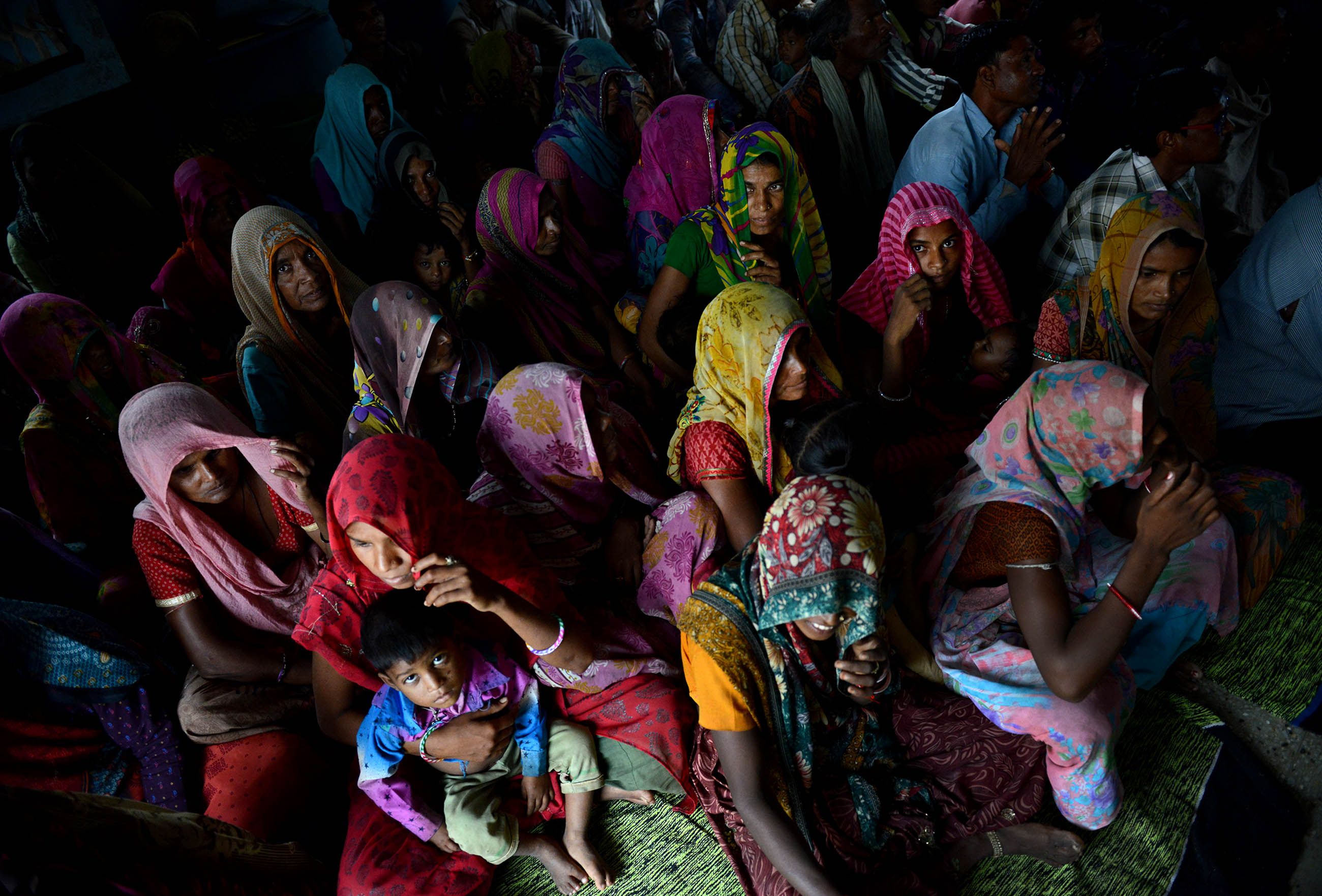TUVAR, India--Dozens of residents of this village in rural northwestern India assembled on the floor of their one-room schoolhouse on a damp morning this summer. The women wore vibrantly colored scarves and the men collared shirts. Children outside leaned on the barred windows to listen in.
At the front of the room, four visitors sat in chairs and began going through a list of prepared questions. In an exchange translated by a village elder from their native Gujurati to English, a picture of daily life emerged: Many of those gathered make as little as 10,000 Indian rupees, or $150 a year, working on small plots of anemic farmland. They have no access to running water; residents have to climb up and down a small hill to draw water from one hand pump. Many of the residents — and most of the women — have never been outside the village boundary, let alone to a hospital.
Every day, the village's mud-and-stone huts are cloaked in darkness, even in the noontime daylight. In one home visited later by the team of visitors, kerosene fumes hung thickly in the air and a stash of firewood was piled within reach for cooking.
Just weeks before, a venomous snake had sprung from a dark corner — where it was hidden in the shadows left by the kerosene lamp — and killed a 9-year-old boy named Shravankumar.
Compiling the grim data, an already uncomfortable John Camillus grew visibly shaken. The 71-year-old University of Pittsburgh business professor wasn't fully prepared for the stark poverty, the inequality seen in many low caste communities that — he had admitted somewhat sheepishly on the car ride to the village — he generally avoided during frequent trips back to his native country.
Yet here he was, sitting above dozens of people who greeted him with a bundle of flowers and who pressed a ceremonial red mark of a bindi between his eyes. He was here to offer a plan to help improve living conditions: a solar power installation that should bring clean, reliable and affordable source of energy.
“Our help is needed here — very badly,” said Mr. Camillus. “This place will look a lot different in a year.”
India — a country of 1.2 billion with one in four people living without electricity — has emerged as a proving ground for clean energy technology. The world’s second-most populous nation and fastest-growing large economy has stretched the seams of its existing infrastructure, and the Indian government has pledged to bring power to nearly 300 million more people as early as 2019.
It’s a challenge that is continents away from Western Pennsylvania and yet energy researchers, companies and government officials in Pittsburgh are closely tied with their peers in India. The same technology being demonstrated for the benefit of struggling Indian villages like Tuvar is also at the center of fledgling efforts in Pittsburgh to figure out how renewable energy can work — and be profitable — on a large scale in the developed world.
Researchers and advocates in the two countries are connected in their hope that microgrid technology — which allows for smaller, localized power generation and distribution systems — can bring light, communications, economic opportunity and even safety to low-income neighborhoods.
Whether in isolated rural areas where traditional grid networks will never be economically feasible, or in densely crowded cities where storm damage or cyber-attacks can suddenly knock out power for millions, microgrids increasingly are seen as a way to bring clean power closer to people using it.
In August, Mr. Camillus joined Bopaya Bidanda, an engineering professor at the University of Pittsburgh, in visiting India to lay the groundwork for a partnership meant to use Indian engineering expertise to help scale up a solar-powered bioshelter in Pittsburgh’s Homewood neighborhood into a microgrid — a project with the potential to feed energy to dozens or even hundreds of homes in the East End neighborhood.
In Homewood, the solar panels are envisioned to power an urban farm and to educate residents about locally grown food and renewable energy.
Such an installation would also work in Tuvar, where residents need safe lighting and a boost to farming. In exchange for help in Homewood, Pitt would offer to send students to work in Tuvar, where, alongside local nonprofits and companies, they would support the solar installations, a bank of computers, a telemedicine clinic and other amenities planned there.
Eventually, the electricity from the solar project is meant to power a 50-acre irrigation network that would enable the Tuvar villagers to grow higher-value crops and earn higher incomes. This way, they should be able to pay off the cost of installing the systems, allowing developers to earn a profit on the investment. Homewood and Tuvar have different challenges, yet the exchange could help both.
“They’re different problems, but we’re using technology to advance the same kind of mission,” said Mr. Bidanda, also a native of India.
“We want to make a parallel between a disenfranchised community in the U.S. and a disenfranchised community in India and around the world. How can you learn from each other?”
Click here to read the full multimedia project published the the Pittsburgh Post-Gazette.
